Ryan Hall's Blog, page 123
October 3, 2017
How One Man Ran A Boston Qualifier On A Broken Foot
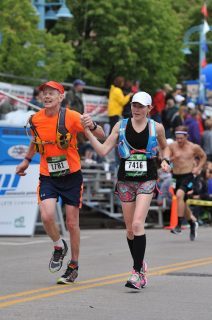
Mike Hanson and his daughter Debbie at Grandma's Marathon, where he ran his Boston qualifier. Photo: Courtesy of Mike Hanson
It was both what Mike Hanson suspected and what he didn’t want to hear. That the sharp pain in his right foot near his second toe, which appeared on an easy 5-mile run after 20 weeks of solid marathon training, was probably a stress fracture. But as his doctor explained, stress fractures often don’t show up on X-rays at the onset of pain; he’d need a follow-up exam a couple of weeks later to confirm a diagnosis. The problem was, Grandma’s Marathon was just two days away on June 20, 2015—and Hanson was on track to qualify for the Boston Marathon, a lifelong dream.
The question for Hanson wasn’t whether he’d still try to run; it was, how far could he go—now with two bad feet. He depended on his right foot, his good foot, to pull his left foot and leg along after a disabling accident more than four decades ago; an accident after which Hanson was told he’d never run again.
Hanson was a senior in high school in 1972, living on a dairy farm with his foster parents in rural Wisconsin when he tripped over a log while deer hunting, his 20-gauge shotgun firing and sending a bullet through his lower left leg, “nearly blowing it off,” he says.
Severe damage to his tendons caused his toes to curl up underneath his foot, shrinking it four sizes. Eventually, his orthopedic surgeon would insert steel pins in his toes and fuse them together to keep them flat, but that would also prevent them from flexing. “My doctors said I’d always walk with a pronounced limp and that running would be impossible,” Hanson explains.
This, to a then 17-year-old whose sense of peace came from running down the open roads of the country, whose achievements on the high school cross-country team made him feel worthy when his own mother told him he’d never amount to anything in life, could have been devastating. But it just made him grittier. “Back then, my motto was ‘Don’t tell me I can’t do something because I’ll do my damnedest to prove you wrong,’” Hanson says. “I still, to this day, am always trying to prove to myself that I can be better.”
RELATED: Doctors Said I’d Never Run Again But I Proved Them Wrong
For many years after the accident, Hanson wore custom-made orthopedic shoes to fit his different sized feet, until in 2008, one of his doctors fitted him for an orthotic, which he could slip into a tennis shoe to hold his short foot in place. “Once I started wearing tennis shoes, I’m gettin’ in my head: I’m gonna run.” Never mind that his team of doctors still said that running was out of the question.
On March 9, 2009 at age 53—a day Hanson will never forget—he laced up his first pair of running shoes in more than 35 years and set out to run two miles around his neighborhood in La Crosse, Wis. He took off fast, as if he were still 16, and thought he’d pass out after about a block, but by walking some, he made it. The next day, he slowed his pace and ran the two-mile loop without stopping.
Before long, he announced to his wife, Cindy, who he calls his “rock, nurse, supporter,” and to his family, that he would run a marathon. They were on board as long as he promised to stop running if his bad foot got worse. It didn’t, but it took him four years to get to the start line of his first marathon healthy after working through a chain of overuse injuries to his good leg and foot.
“If you were to watch a slow-motion video of me running, it’s kind of frightening,” Hanson explains. “You would think that my good leg would just bust, there’s so much torque on it.”
Despite his awkward running form, in 2013 Hanson completed 26.2 miles in just under four hours. Although he was proud of his accomplishment, he knew that he could improve with better pacing and fueling. In 2014, he ran a second marathon in 3:42:43—a 15-minute PR, and not too far from a Boston qualifier (BQ) for his age group, 55 to 59, which “lit the fire to keep training,” he says. Plus, the following year, he’d move up to the next age group, 60 to 64, for which the Boston qualifying standard for men was 3:55. He was confident he could run a time well under that mark.
RELATED: Over 5,000 Runners Who Qualified To Miss Out On Boston Marathon
While Mike Hanson had been training for his second marathon, his daughter, Debbie Hanson, inspired by her dad’s running, ran her first half marathon, following a program that coincidentally shared their family’s last name, the Hansons Method. Her success with the program spurred her dad to try it, too, and in January 2015, Debbie and Mike decided they’d train for Grandma’s Marathon together. Mike also hired a coach, professional runner Katie Kellner, through Hansons Coaching Services.
Despite the tough BQ-focused training plan topping out at 64 miles a week, Kellner said that Mike never once complained about his foot and leg issues. “One of the reasons that I love coaching is that my athletes constantly inspire me in my own training,” Kellner says. “Mike was one of those athletes. There were definitely times during tough workouts of mine when I thought, ‘If Mike crushed his workout today, then I can crush mine too.’”
When Mike’s foot starting hurting the week before the race, Kellner and Mike’s orthopedic surgeon—who had finally stopped telling him not to run—supported Mike’s decision to at least start the marathon, but to stop as soon as he felt serious pain. Unfortunately, that pain began at mile two when Mike felt a pop in his foot. He turned to Debbie and stoically said, “I think it just broke.”
“What do you want to do?” she asked.
“Well, it hurts, but it’s somewhat bearable. We’ll just continue on and see how it goes,” Mike said.
They tried everything to mitigate the pain. They slowed their pace. Mike shortened his stride. They ran on the shoulder of the road where it was softer. But his foot continued to throb. He thought about dropping out at mile six, but decided against it.
“My dad is super stubborn,” Debbie says. “I knew he would go until he absolutely couldn’t run anymore.” Around mile nine, Mike had a little talk with himself. “I was thinking, ‘We’ve done all this training and my daughter is right here next to me. I’ve gotta finish this.’”
So they trudged along, Debbie encouraging him the whole way. With their family cheering for them near the end, the Hansons crossed the finish line hand-in-hand in 3:46:03, a BQ for Mike by nearly nine minutes.
The next day, with a black and blue foot twice its normal size, Mike learned that he’d broken his second metatarsal, which would require wearing a cast for seven weeks, but the BQ was worth it, he says. In early September, Debbie, then 34, also nabbed a BQ at the Minocqua Marathon with a time of 3:26:07. The Hansons would head to Boston together.
By the time the leaves changed from green to gold in early October, Mike’s foot had healed up and by December, he and Debbie were training again with Kellner, logging miles down snowy country roads—this time, with no stress fractures.
On April 18, 2016, the Hansons crossed the historic Boston finish line healthy, strong, and “Just the way we started our journey—side by side,” Debbie says. In fact, Mike re-qualified for Boston at Boston, which he ran again in 2017. In a few months, he’ll start a new marathon training cycle to try to qualify for Boston 2019 with his long-time mantra, which he’s passed along to his children and grandchildren—You only can’t if you don’t try.
RELATED: Where To Qualify For Boston
***
About the Author
Cate Hotchkiss is a freelance journalist, essayist, and marathoner who lives in Hood River, Oregon. She’s on Instagram @catehotchkiss.
The post How One Man Ran A Boston Qualifier On A Broken Foot appeared first on Competitor.com.
5 Things To Know About The 2017 Chicago Marathon

Photo: Courtesy of Chicago Marathon
The 40th running of the Chicago Marathon takes place this Sunday, Oct. 8. Want to learn more about this World Marathon Major? We have all the details so you’re ready to cheer on the race.
Could This Be A Year That An American Wins?
There is a strong chance that Americans Jordan Hasay and Galen Rupp will have a podium finish at this year’s race. Earlier this year, they both did just that at Boston, with Hasay finishing 3rd in the women’s race and Rupp finishing 2nd in the men’s race. But can either of them win outright? There is always a possibility.
Hasay may have a slightly better shot. With the fastest debut marathon by an American woman, she enters the race with the fifth fastest time among elites. Ahead of her is Ethiopioan Tirunesh Dibaba, Kenyans Florence Kiplagat and Valentine Kipketer, and Madai Perez of Mexico. Dibaba hopes to continue her strong 2017 season after running the third fastest women’s marathon time ever at the London Marathon in April. Kiplagat is the defending women’s champion in Chicago, but finished a disappointing 9th at London. Kipketer was third at last year’s race. At 37 and over 10 years removed for her PR, Perez is likely not to be among the top group.
Rupp, the Olympic Bronze medalist in the marathon, easily won a strong tune up half marathon at Rock ‘n’ Roll Philly. However, he is entering a field where seven other men have run faster times, including six under 2:07. These include Kenyans Dennis Kimmetto, Stanley Biwott, Abel Kirui, and Ezekiel Chebii, as well as Ethipopian Feyisa Lilesa.
Kimetto is the current world record holder, but has either DNF-ed or run much slower in recent races. Biwott’s last race was London 2016 and it was a great one. He set his PR of 2:03:51. However, he dropped out of the New York City Marathon in November 2016 and has not raced a 26.2 since. Kirui is the 2016 Chicago Marathon champion and looking to defend his title. Lilesa is the Rio Olympic silver medalist.
Meanwhile Rupp will also have to contend with a strong American field including NCAA champion and record holder Sam Chelanga, Luke Puskedra and debut marathoners Chris Derrick and Noah Droddy.
A World Record May Fall
Unlike last week’s Berlin Marathon, no overall world records will likely be set at Chicago. However, one record that could potentially fall is in the 60-and-over division. Legendary marathoner Joan Benoit Samuelson, 60, will be looking to become the first woman to go sub-3-hours. Bernardine Portenski of New Zealand set the current mark of 3:01:30 in 2010.
“Storytelling is important to me and it’s how I motivate myself,” she said in a statement released during the summer after announcing she’d run. “My race decisions often reflect my narrative. Once I turned 60, I knew the Chicago race would represent the next chapter in my career.”
RELATED: Chicago Marathon Welcomes Back 5 Legendary Runners
A Flat And Fast Course Does Not Mean It’s Easy
Flat and fast are the two words always associated with the Chicago Marathon. While those are definitely true—there are barely any hills along the entire route—that doesn’t mean it is without challenges. The course winds its way through 29 Chicago neighborhoods. While the first half of the race is filled with spectators, crowds thin out after mile 13. The weather is unpredictable in Chicago during October. This year’s forecast is high 70’s with a chance of rain, making warmth and wind a factor, especially with the lack of shade in the last half. The one hill, nicknamed Mount Roosevelt, is tiny but comes right at the end of the race. Keeping an even pace in the first 13 miles of the race means you’ll be ready to work and run fast, despite the challenges towards the end.
A Midlife Celebration
A 40th birthday is something to celebrate, for both people and for marathons. To honor its 40th anniversary, the Chicago Marathon sent birthday cards and a commemorative patch to participants celebrating their 40th birthday in 2017. NBC Chicago reports nearly 2,000 runners received the gift, including 15 people who will turn 40 on Oct. 8.
The City of Chicago Loves Marathoners
Having over 40,000 marathoners, along with their spectators, come to town is a huge boost to the Chicago economy. According to an independent economic study, the 2016 Chicago Marathon delivered an estimated $282 million in total business impact to the city. Of the over 41,000 runners who picked up their packet for last year’s race, 28 percent were visiting the city for the first time. The independent study was conducted by University of Illinois at Urbana-Champaign’s Regional Economics Applications Laboratory.
RELATED: Inside the Chicago Marathon Med Tent With Medical Director George Chiampas
The post 5 Things To Know About The 2017 Chicago Marathon appeared first on Competitor.com.
October 2, 2017
A First Look At The New TRX Home2 System With Strength Exercises For Runners
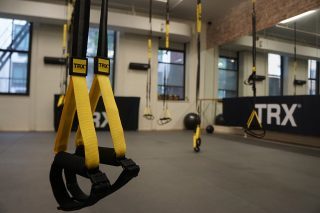

Photo: Courtesy of TRX
The TRX suspension system—which enables you to train functional movement patterns using your own body weight—is a complete home gym in a 1-pound box. It’s managed to pierce a lot of runners’ inner shields exactly because it builds light, lean muscle; can go anywhere your sneakers do; and brings total-body benefits—without the bulk.
What exercises best complement your running regimen is up for debate: “Do I do body-weight, HIIT, yoga, weights, TRX, or what?! True: There are almost too many choices. But TRX simplifies that—with a free 1-year subscription to their updated fitness app. Here is a first look at the new TRX Home2 System ($199.95, trxtraining.com) available for purchase today, the updated TRX app, plus the 4 Best TRX strength exercises for runners.
What’s New
Lighter than ever, the TRX Home2 weighs only a pound and packs really small, so you can take it anywhere. Out of the box, you can easily anchor this total-body training tool to sturdy tree limbs, roofing joists, pullup bars, ceiling anchors, or over doors. What stands out is the continued simplicity of the device and its attachments despite its wide range of uses.
Adjustable Foot Cradles: This new feature accommodates a greater range of foot sizes. Whether you wear a women’s size 5 or men’s size 14, you can adjust the Velcro foot cradle to fit, so your foot doesn’t slip. Yet, it’s still easy to get your foot out too. That quick change comes in handy when going from exercises like TRX Lunges (with a secure toe cradling) to a TRX Hip Bridge (with a stable heel platform).
Padded Straps System: The strap area just above the handle gets a lot of wear and tear, but with the added padding of the TRX Home2 System, your hands and wrists don’t. This makes for a more pleasant hand-feel as you’re pressing and pulling your body weight with each repetition. The foot cradles are padded as well.
Loop Stop Up Top: Depending on what suspension system you’ve tried, you may have encountered the dreaded not-quite-even straps. So you find yourself fiddling to get the handles even when you should be training. The TRX Home2 System attaches the straps to a shorter loop near the top that doesn’t allow as much play on each side. So even though you can adjust the strap length easily and quickly, the anchoring point has a smaller radius that keeps the straps in just about the same position, allowing you to get to work faster.
RELATED: How To Integrate Cross-Training Into Your Running
TRX App Updates
The TRX app has also been updated to provide new workouts for the TRX Home2 buyers, who get a free 1-year subscription to the app (normally $4 per month for more than 80 workouts in running, cycling, yoga and HIIT).
Throughout the training, you can view integrated video demos of the moves, making it easy to glance at your phone, tablet or computer and then follow along. The coaches give encouraging cues and really helpful form tips so you know why you’re doing what you’re doing. And if you’re wearing a heart rate monitor, the coaches prompt you with “custom” in-ear heart-rate-based pacing tips so you get the most out of your workout, as if you were working with a real trainer.
Only got 10 minutes? Or want to train slow and strong today? Want a running/cycling sprinting interval, or a TRX/strength combo workout that kicks your bum? The TRX app lets you scroll through workouts based on the time you have and the type of workout you want to do. You can also schedule workouts with reminders, record your own moves, and grow as an athlete with in-app progression algorithms to help you track your stats and exceed your fitness goals.
4 Best TRX Strength Exercises For Runners
 Photo: Courtesy of TRX
Photo: Courtesy of TRX
These 4 TRX strength training exercises for runners will help power up your core, train under-exercised muscles, and strengthen your lower body all over so you’re running lighter (and longer) than ever before.
Side Lateral Lunge to Hip Hinge
Adjust the TRX strap to mid-height. Stand facing the anchor point with feet wider than shoulder width, about 4 feet apart, lightly holding a handle of the TRX in each hand, arms slightly bent. Step back so straps are about 45 degrees to floor.
Push your hips back and down and lower hips into a side lunge until your right thigh is about parallel to the floor, keeping your right knee tracking over your right toes as you lower; and keep your chest up throughout. The left leg should stay straight the entire time as the right leg bends.
Keep feet planted but press up to center until both legs are straight and your arms are straightened and lowered in front of you to about hip level.
Hinge forward at the waist, pushing your hips back and keeping your core tight, as you lower your chest until your torso and arms are parallel to the floor. Use your glutes and core to return to center.
Grip handles and return to a right lateral lunge. Do all reps on one side and then repeat on opposite side.
TRX Lunge
Stand facing away from a low anchored TRX strap, about 1 foot away from it, with the top of your right foot secured into the adjustable foot cradle. Place hands lightly behind head.
Lower your right knee back and down toward the floor until your left thigh is parallel to the floor, making sure your knees track over your toes and don’t go past your toes.
Fire through your left glutes to press back up to standing. Repeat.
Forward Lunge with Y Flye
Stand beneath a TRX with the straps adjusted to their shortest point. Face away from the anchor point, with your arms straight in front of you parallel to floor, lightly gripping the handles. Straps will be at about 45 degrees to floor and feet should be hip-distance apart.
Lunge forward with your right foot until your front thigh is parallel to the floor and your back knee nearly touches the floor. As you lower, lift your arms out into a Y position to activate your back.
Press through the heel of your front foot to return to standing.
2-Arm Row
Stand facing the anchor point with the straps adjusted to short- or mid-length. Step away from the anchor point so that the straps are at a diagonal to the floor. And lean back so that your body forms a diagonal line to the floor, with arms straight, as you lean back holding the straps in front of you. Toes up. To make it harder, lower the straps and lean back farther.
Row both of your arms in to your sides, tucking elbows into sides and pulling your torso up, keep toes up still. Keep body strong and activated throughout.
Lower under control to start, with body at a diagonal to the floor.
RELATED: Strength Training Is Good For You, Runners—Here’s Proof
The post A First Look At The New TRX Home2 System With Strength Exercises For Runners appeared first on Competitor.com.
Here’s Exactly How To Crush Your Next Half Marathon
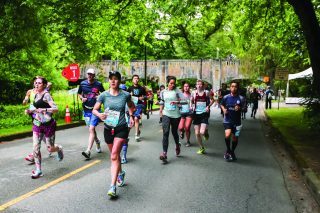
Without a doubt, the half marathon is my favorite distance—but I can certainly empathize with runners who can’t imagine running for 13.1 miles without stopping! In fact, in middle school my favorite race was the 400 meters. In high school? It was the mile. And in college, I was all about the 6K in cross country.
RELATED: Division II Champ Neely Spence Turns Pro
Even my first three years as a professional runner, I never ran a race longer than 10 miles. Finally in 2015, after almost two years of frustrating injuries, illnesses and setbacks, I was losing my love for the sport. I kept comparing my current self to my former self. I needed a change, something different than I had ever done before so I would have nothing to compare it to. I decided to try the half marathon (a daunting distance for the uninitiated) and I loved it. Whether you are contemplating your first half, wanting to improve a past performance or simply crush an upcoming race, here are my tips on how to conquer 13.1.
Level 1: I Wanna Finish!
Are you new to the half-marathon distance and feel a little daunted by the challenge of such a long race? Using a walk/run method will help you pace yourself from start to finish. Plan to run 9 minutes and then walk 1 minute. By breaking the run up into 10-minute segments, you will stay more engaged in the moment—this helps you feel less overwhelmed by the length.
Level 2: I Wanna Run!
Are you ready to push yourself in a half but don’t know how to approach the distance? The key is to set yourself up for a negative-split race (finishing faster than you start). Begin at your normal training pace and hold steady for the first 6 miles. At that mark, slowly pick it up so your last mile is your fastest. Using the progression technique, you will not expend too much energy early on so instead of bonking in the second half, you will pass other runners while feeling strong.
RELATED: 13.1 Things To Know About Running A Half Marathon
Level 3: I Wanna Race!
Are you comfortable with the half-marathon distance and ready to achieve a PR? I suggest breaking the distance into four parts.
First 3 miles: Ease into your pace, trying to dial in goal effort by the third mile.
Middle 4 miles: Focus on form, staying calm and relaxed, in tune with your body and breathing.
Miles 7–10: This is where things start to get tough. Talk yourself through this part. Think about the work you have put in, and then keep your eyes up and your mind on the finish line.
Once you hit the final 5K (aka the 10-mile mark), it’s game on. Time to race and kick it in to victory.
BONUS: Drink Up, Fuel Right
Covering 13.1 miles at your best requires consumption of fluids and fuel on the course. Be sure to practice with gels before your race to determine what sits well in your stomach. I recommend taking a gel 15–30 minutes before the start, sipping water or electrolyte drinks at the provided stops and then downing another gel at mile 6. This system will help you run strong all the way to the finish line!
RELATED: 4 Breathing Exercises For Every Level Of Runner
The post Here’s Exactly How To Crush Your Next Half Marathon appeared first on Competitor.com.
This Rule Of Road Running Can Help Save Your Life
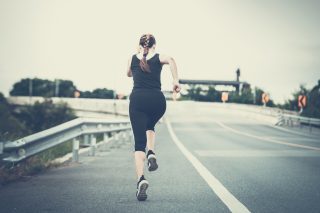
A new study out of Finland shows that one common mistake puts you at a very high risk of danger when running on the roads. It all has to do with which way you are facing when you run.
The Washington Post shared the study, which revealed that runners—and pedestrians—have a 77 percent lower risk of being struck and injured by a car when running or walking facing traffic.
“Although no federal laws mandate which side you should be on, the Centers for Disease Control and Prevention and the U.S. Transportation Department recommend running against traffic,” adds The Washington Post.
RELATED: Street Smarts—Safety Tips For Runners
If there is a sidewalk that is, of course, the safest place to be, but should you be running on the shoulder, this is an important reminder (or first time lesson) that you should always run against traffic. Additionally, running in a single-file when with a group—or no more than two abreast—can also keep you out of harm’s way.
“Not only is it safer to run against traffic, but it is also the law in certain states—like Texas—when there is no sidewalk present,” shares Chris McClung, coach, co-owner of Rogue Running and co-host of its Running Rogue podcast. “You need to be able to see oncoming traffic and then be proactive to avoid danger on your own when the car passes.”
McClung adds that if you are running on the sidewalk you can run on either side of the road, however, he still prefers to run against traffic while on the sidewalk so you still have a view of cars should one lose control and jump the curb.
RELATED: Running Gear—6 Bright Lights To Take Back The Night
If you are running in the early morning or late at night—or even during weather when visibility is low—you want to take extra safety precautions when running on the roads.
“For visibility, the best thing you can do is wear a light, ideally a flashing one on your body on both sides,” urges McClung. “There are a variety of clip on lights or headlamps available to give you maximum visibility. You can also wear reflective shoes and clothing, but a light provides significantly more visibility allowing cars to see you two to five times sooner than reflective strips.”
The post This Rule Of Road Running Can Help Save Your Life appeared first on Competitor.com.
Spartan Just Hosted Its Most Competitive World Championships Ever
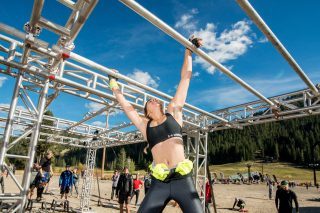
Competitors hit the hybrid “Twister,” “Monkey Bar” obstacle nicknamed “Monkey in the Middle” on their way to the finish line at the 2017 Reebok Spartan Race World Championship at Squaw Valley in North Lake Tahoe. Photo: Spartan
Many of the world’s greatest obstacle racers gathered in Lake Tahoe, Calif., this past weekend to take part in the 2017 Reebok Spartan Race World Championships. Over 15,000 athletes competed throughout the two days at Squaw Valley.
The biggest event of the weekend, the 16-mile Elite Championship, took place on Saturday. The best Spartan racers from over 50 countries conquered almost 40 obstacles during the race. To qualify for the elite heat, competitors had to finish in the top five of a qualifying Spartan race during the 2017 season.
American Cody Moat was the top man to finish, in a time of 2:32:34. Behind him were Jonathan Albon of the UK in 2:36:11 and Robert Killian of the U.S. in 2:37:17. On the women’s side, Canada’s Lindsay Webster took first place in 3:06:10. Zuzana Kocumov of the Czech Republic was second in 3:07:53, while American Alyssa Hawley was third in 3:15:16. Both Moat and Webster received $15,000 for their win in what was one of the most competitive Spartan World Championships ever.
The inaugural World Team Championship was held on Sunday. Coed teams of three racers represented their country on a 8.5-mile “Super Course” filled with treacherous obstacles. Team USA (Robert Killian, Alyssa Hawley, and Ryan Woods) were the overall winners. Followed in second was Team Canada, with Team Czech Republic coming in third.
Spartan tested eight elite athletes for prohibited substances at the championships this weekend. This was the first step Spartan events is taking towards meeting the international standards set by the World Anti-Doping Agency (WADA) and the United States Anti-Doping Agency (USADA).
Spartan’s next big event is the 2017 Ultra World Championships, taking place in Iceland from December 15-17.
RELATED: What Amelia Boone Can’t Run Without
The post Spartan Just Hosted Its Most Competitive World Championships Ever appeared first on Competitor.com.
The Best Halloween Costumes For Your Next October Race
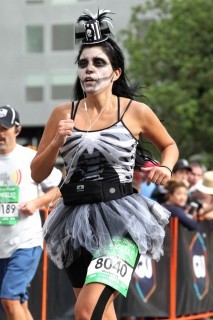
It’s October so that means it is getting close to Halloween! This time of year is perfect for running not just because of the amazing temperatures. We can can eat copious amounts of tiny candy bars and think about our costumes if we plan to run a Halloween road race.
When picking a typical Halloween costume, your options are limited only by your creativity. But with a race costume, you’re limited by the need to run for miles.
What Not To Wear
Since you’re costuming yourself to run, there are a few things to eliminate right away.
Face paint: Unless you’re trying to dress like a melted version of whatever character you’re portraying.
Masks: Unless running is so easy for you, and you want the challenge of exercise with a blocked airway. Besides, most races don’t allow masks.
Bulky and constricting costumes: Unless you want to run without swinging your arms or fully pumping your legs. Save the mermaid costume or the moving box painted like a die for your Halloween parties.
Costume Ideas
The best costumes come from taking your normal running gear and spicing it up a bit. Here are some options.
Smurf: Wear a blue shirt and white pants or shorts. You can create a simple version of the signature Smurf hat with a white shirt sleeve. If you have sewing skills, you could create a more true-to-cartoon version.
Brainy Smurf: Same as above with glasses.
Smurfette: Make the same hat, and place it on your blonde hair. Blue leggings or a long sleeve shirt will give you the blue skin. Then, wear a white tank top, a running skirt or sundress.
Papa Smurf: This works best if you have a white beard. However, you can wear a possibly uncomfortable fake one. Then just wear a blue shirt and swap out the white garb, for red.
Teenage Mutant Ninja Turtles: This one is especially easy if you already have a TMNT shirt. A simple green running shirt will also do just fine. Wear a green outfit, and then accessorize with the color of your turtle of choice. Red for Raphael, orange for Michaelangelo, purple for Donatello and blue for Leonardo. Cut strips of a lightweight, colored fabric for your head, arms and legs. For your shell, you can go through various levels of craftiness. The easy option is to go with a drawstring backpack, affixed with a cardboard oval. Spray paint the oval green and draw the shell pattern once it dries.
Pool balls: This is another good group or solo option. If you’re alone, the eight ball is probably the way to go. Wear all black and cut out a white circle (cloth or paper) with an eight on it. Pin the circle to your chest like your race bib and you’re instantly an eight ball. For a group, you can be the solid pool balls.
RELATED: 11 Spooktacular Halloween Races To Run In 2017
The post The Best Halloween Costumes For Your Next October Race appeared first on Competitor.com.
September 29, 2017
Competitor Running To Be In Race Bags At Rock ’n’ Roll San Jose
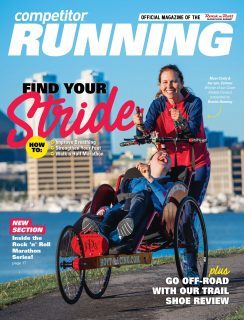
Photo: Oliver Baker
Competitor Running, the official magazine of the Rock ‘n’ Roll Marathon Series, will be available in race bags for all runners starting the weekend of Oct. 6–8 at Rock ‘n’ Roll San Jose Half Marathon, 10K and 5K.
Attention San Jose Runners!
Post on Social Media to Win Prizes
When you get your magazine in your race bag, post a photo (get creative!) on social media with the hashtag #RnRMag for a chance to win free entry to next year’s Rock ’n’ Roll San Jose.
Meet the Editors
On Saturday, Oct. 7, from 11 a.m. to 12 p.m., editor-in-chief Nicki Miller and managing editor Kevin Gemmell will be at the Rock ’n’ Roll expo booth to talk about all things running. Bring your questions and you might just leave with a VIP wristband for the weekend!
“I’m so excited to be in San Jose and look forward to interacting with all of the runners who make this marathon series so great,” Miller says. “Competitor Running is your coach, nutritionist and running friend. And we couldn’t be more thrilled to be directly in the hands of Rock ‘n’ Roll runners, starting in San Jose.”
The newly redesigned magazine includes a special section on the Rock ’n’ Roll Marathon Series, our cover contest winners—Cindy Spiva and her son, Cormac—as well as a column by Meb Keflezighi, coaching tips from elite runner Neely Spence Gracey, nutrition info and all the latest tech and gear from the running world.
Moving forward, the magazine will be included in runners’ bags at all Rock ‘n’ Roll Marathon Series events in the United States. It will also continue to be available at running stores and other healthy locations.
RELATED: Read the September 2017 Digital Edition of Competitor Running Magazine
The post Competitor Running To Be In Race Bags At Rock ’n’ Roll San Jose appeared first on Competitor.com.
What Amelia Boone Can’t Run Without
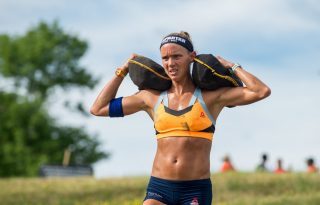

Amelia Boone is one of the most decorated obstacle runners in history. She is a three-time champion of the World’s Toughest Mudder, a Spartan Race World Champion and an accomplished ultrarunner. When she isn’t training, Boone works full-time as a corporate lawyer for Apple. Her next race is the 2017 Spartan World Championships on September 29th. You can stream the event live on Facebook at Spartan Live.
Ahead of her race this weekend, Boone shared the five items that power her over obstacles and across miles.
RELATED: What Clare Gallagher Can’t Run Without




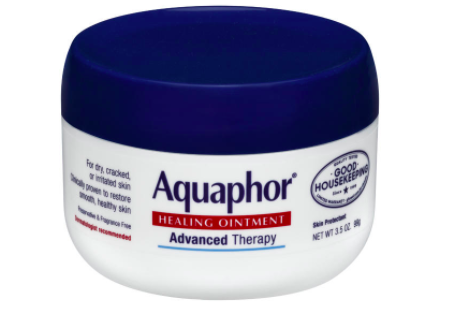
The post What Amelia Boone Can’t Run Without appeared first on Competitor.com.
September 28, 2017
New Muscle Ultrasound Measures Energy Levels
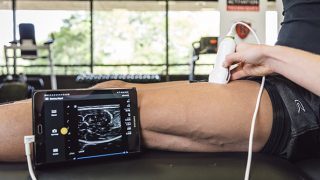

Photo: Courtesy of MuscleSound
Some days you just don’t feel up to running yet can’t explain why. Why does your body feel blah? With a new muscle ultrasound, you are able to measure the level of energy stored in your muscles. That score may very well explain the flat feeling and why running just doesn’t appeal on a given day.
How It Works
Similar to the noninvasive device employed for pregnancy checkups, muscle ultrasound takes images from various parts of your body to determine muscle fuel levels. This can give clues as to metabolism, digestion, immune system, glucose levels and stress. The test results even advise as to disparities between the different sides of your body.

Photo: The writer’s test results show how the left and right calves vary in amounts of fuel.
Because a single molecule of glycogen surrounds itself with three molecules of water, an ultrasound image of muscle energy shows up darker. MuscleSound, the company offering the test, then applies its patented software, using an algorithm to determine your score. Athletes can use the information to gauge their readiness. Teams and individuals can get regular scans to figure out causes and effects of training, nutrition and lifestyle factors to help optimize performance.
Test Options
Muscle ultrasound also gives highly accurate body composition analyses, instead of calipers, using measurements at a variety of locations on the body. Both the muscle fuel and body comp tests are quick—less than five minutes. Since they only require a handheld ultrasound device and a tablet with MuscleSound software, results are immediate.
Though the company’s headquarters is near Denver (tests can be done there), MuscleSound is working with fitness centers, physical therapists and other sports professionals to bring the system to individuals and teams worldwide.
RELATED: Now You Can Buy Genetic Testing Kits At The Pharmacy
The post New Muscle Ultrasound Measures Energy Levels appeared first on Competitor.com.
Ryan Hall's Blog
- Ryan Hall's profile
- 21 followers



